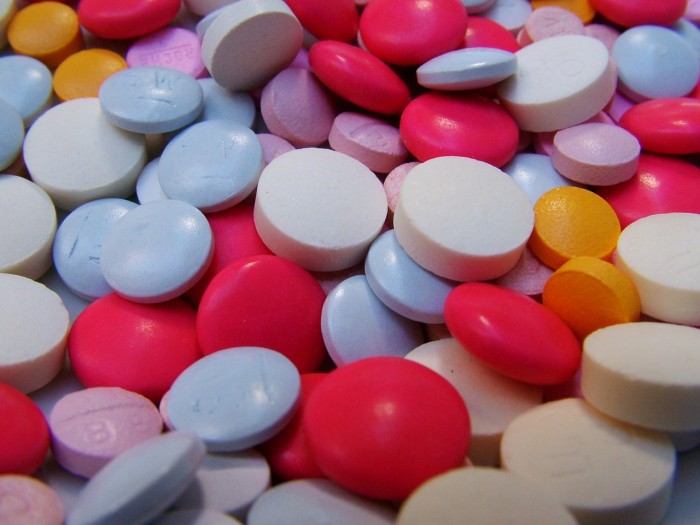With the opioid crisis claiming more lives every day, we need to do everything in our power to help people with addiction achieve the best possible outcome, said Robert Matylewicz, DO, FASAM, medical director at The Ranch PA drug rehab in Hanover, Pennsylvania. “Allowing them to have a say in the design of their individual addiction treatment program empowers them and engages them more deeply in their healing process and gives them a better chance for lasting recovery,” said Dr. Matylewicz, who has been treating people with addiction for more than 10 years.
Taking Drastic Measures to Fight a Dangerous Foe
Perhaps because he was a soldier, Dr. Matylewicz views addiction as the enemy. “Opioid addiction is a formidable foe, and we need to use all the weapons we have in our addiction treatment arsenal to fight it,” he said. Dr. Matylewicz (“Dr. Rob”), a frequent speaker on addiction treatment topics, recently gave a presentation on the benefits of medically assisted treatment (MAT) for opioid addiction at the Summit for Clinical Excellence in Pittsburgh. He found that many of the questions he fielded from professionals in the audience were focused on concerns about using medications to treat patients already addicted to other substances, and allowing them to use medications to maintain recovery after they return to work. Shouldn’t people in recovery — and in the workplace — be completely drug-free? Not necessarily, Dr. Matylewicz told conference attendees. While these are valid questions and concerns, he believes that for many addicts, the MAT option may be the best way to avoid cravings to use again. Being completely drug-free in recovery may not be realistic for someone addicted to opioids. Sometimes, being closely monitored while receiving prescribed medication that blocks the effects of opioids is necessary to prevent relapse. “Some rehab centers don’t even talk with their clients about the medication options for treating addiction and overdose, and I think this is unfair to the client,” says Dr. Matylewicz. “People should be presented with as many options as possible so they know what is available and can make informed decisions about which treatment might work best for them. If they are never offered the full range of treatment options, they may not have as great a chance for success, and they also may be more vulnerable to relapse and overdose after they complete their treatment program.”
Different Patients, Different Choices for Treatment
Although his training and early experience as an addiction specialist were oriented toward abstinence and the 12-step approach to addiction treatment and recovery, Dr. Matylewicz’ more recent clinical experiences have taught him that those methods don’t work for everyone. Opioid treatment medications, with careful monitoring as required by the Drug Addiction Treatment Act of 2000, have their place. In Dr. Matylewicz’ experience, most of the people addicted to opioid painkillers or heroin aren’t going to get better from abstinence alone. Medically assisted therapy is what works for them. For many patients, MAT is the thing that saves them from being the person who steals their mother’s jewelry to get heroin and dies from an overdose, to being the person who actually kicks the habit and reclaims their life. He points out that 12-step programs like AA and others are effective as part of a long-term recovery plan, but those are support programs that fall outside of actual treatment. He is also careful to point out that MAT isn’t for everyone. Even when presented with the MAT options, many clients will choose a program that combines one-on-one counseling, support group sessions, lifestyle coaching in nutrition and exercise, and a range of non-medication alternative therapies. It is important, though, that they are informed of the options and have a voice in creating their treatment plan. If they are engaged and committed to the plan they choose, and receive counseling and treatment to address the underlying causes of their addiction, their individualized program will likely be effective. Yet, for some people in active opioid/opiate addiction, MAT is sometimes the only treatment that can turn them around.
What Medically Assisted Treatment Looks Like
When a client contacts the The Ranch PA treatment facility, and they are in the throes of opioid withdrawal, they are admitted into medical detox as a first step. They receive buprenorphine, a partial agonist analgesic medication that works in the nervous system and brain to reduce withdrawal symptoms and, importantly, to block the effects of opioids. The doctor administers buprenorphine for several days to help the client manage withdrawal symptoms as they detox. The buprenorphine is tapered down over seven to 10 days, or until the substance of abuse is no longer in the client’s system. Once the client is stabilized, they meet with their primary therapist and physician to discuss which course of addiction treatment might work best for them. They may choose abstinence or a rehab program that involves MAT — either program also includes individual and group counseling, a range of recovery therapies, and treatment for other health issues or co-occurring disorders, as needed. If they choose MAT to help control drug cravings, they have the option to continue taking buprenorphine (in pill form) or to take Vivitrol, an antagonist medication that the addiction specialist administers as an injection at ongoing doctor visits. Both buprenorphine maintenance therapy and Vivitrol require monitoring and office follow-up. For the client who chooses MAT, the physician must make sure they can agree to this highly regulated course of treatment and must determine if they are making this choice simply as a way to continue using drugs. The therapists, nurses and physician work together to weigh all the factors in each case and tease out the client’s true motivation. Based on their assessment, the care team may decide that a program of abstinence is better. “People in active addiction aren’t thinking normally — they can be manipulative in an effort to feed their addiction, and we have to be very vigilant about this to ensure we are matching the right treatment to each individual patient,” says Dr. Matylewicz. He notes that, ultimately, clients need to view their addiction treatment and recovery as disease management. Just as a patient with diabetes or heart disease follows a doctor’s recommendations for medication and follow-up, coordinated care of other health issues, and lifestyle choices like diet and exercise, (and even reduced work hours), a person being treated for addiction must follow a healthcare program to manage their disease. “We need people with opioid addiction to think of this as a maintenance health program where they follow our recommendations for disease treatment and aftercare just as they would if we were treating them for diabetes,” says Dr. Matylewicz. “The critical components of care are the same — early diagnosis, individualized treatment, management of other disease states that may be contributing to the condition, ongoing therapy, and lifestyle changes and monitoring over time. When people can follow the plan and work on themselves this way, they can heal.”
Sources
Drug Addiction Treatment Act of 2000 (DATA 2000). Substance Abuse and Mental Health Services Administration (SAMHSA), 2000. https://www.samhsa.gov/medication-assisted-treatment/legislation-regulations-guidelines Vivitrol offers the fantasy of being drug-free. But that’s not the most important thing in tackling addiction. Daniel Wolfe. First Opinion, STAT, June 2017. https://www.statnews.com/2017/06/29/vivitrol-methadone-opioids/

